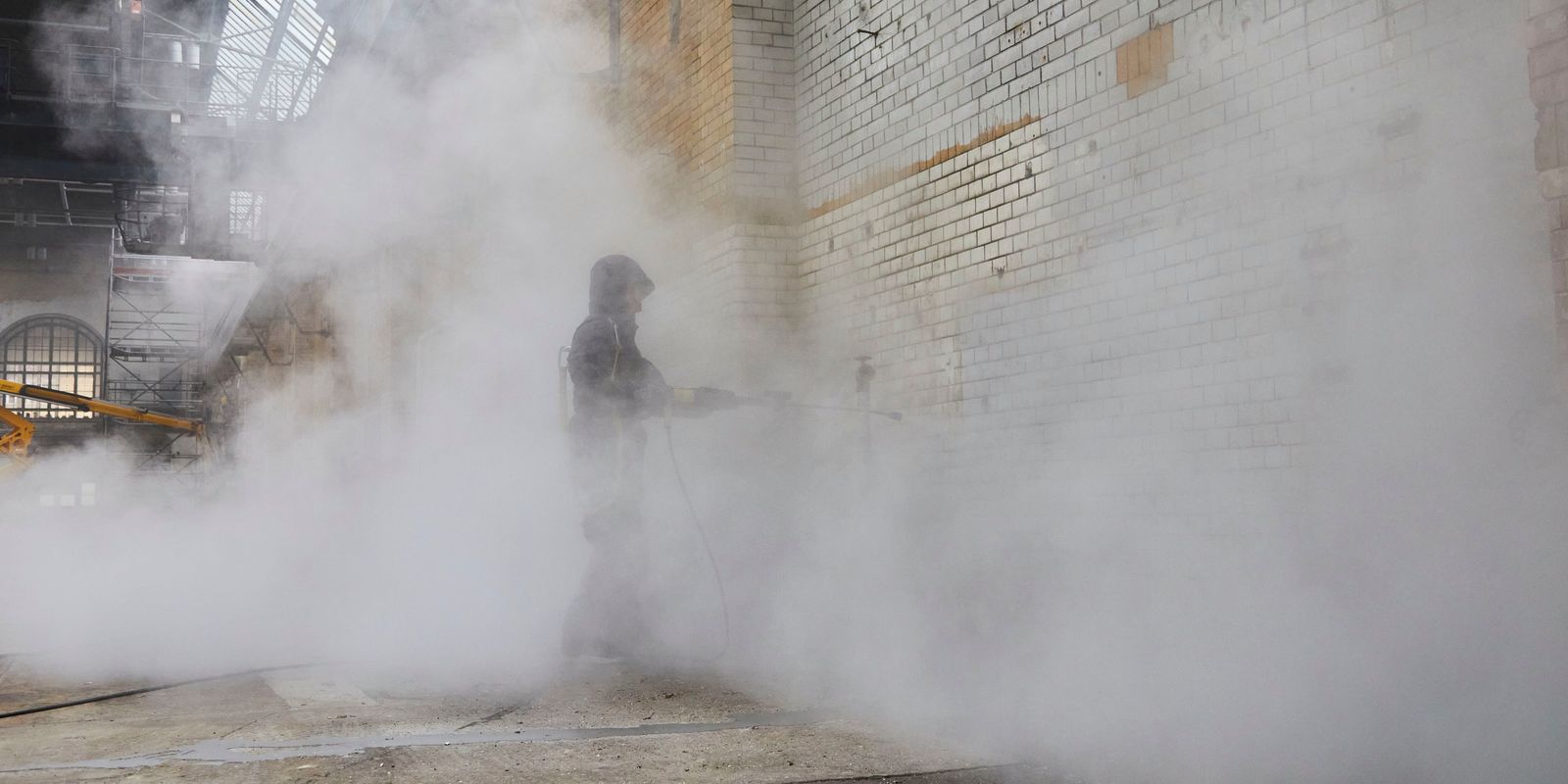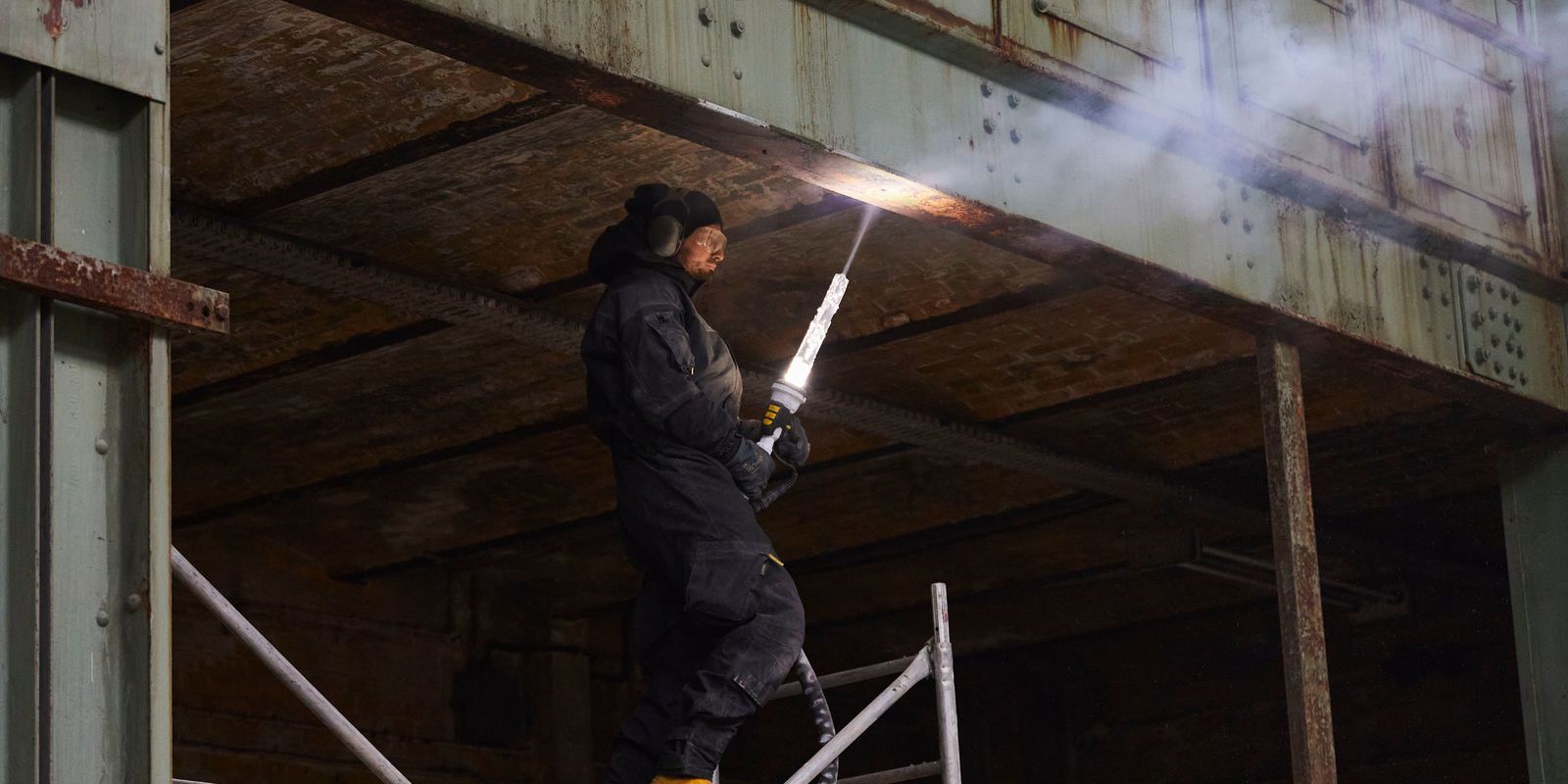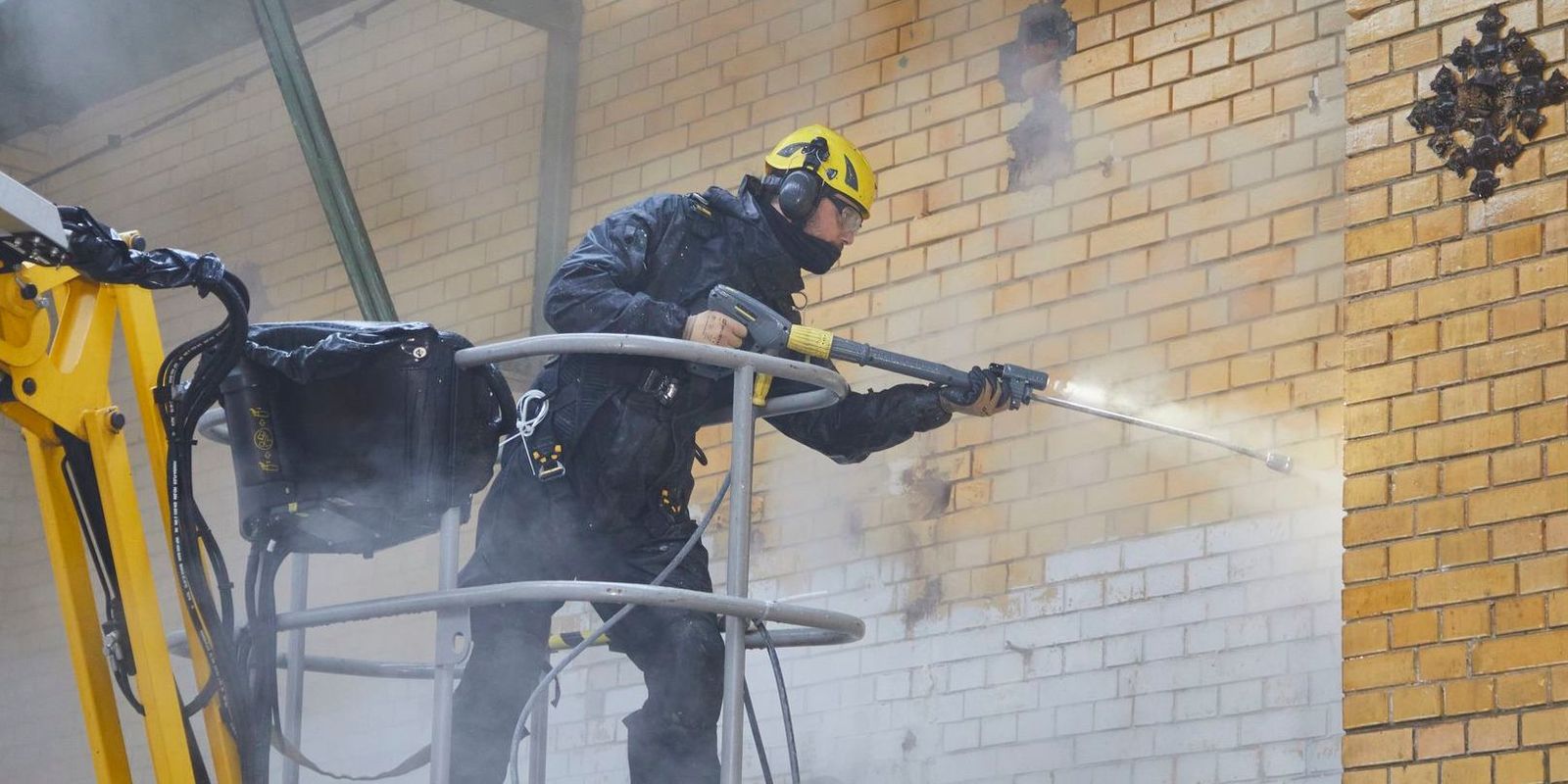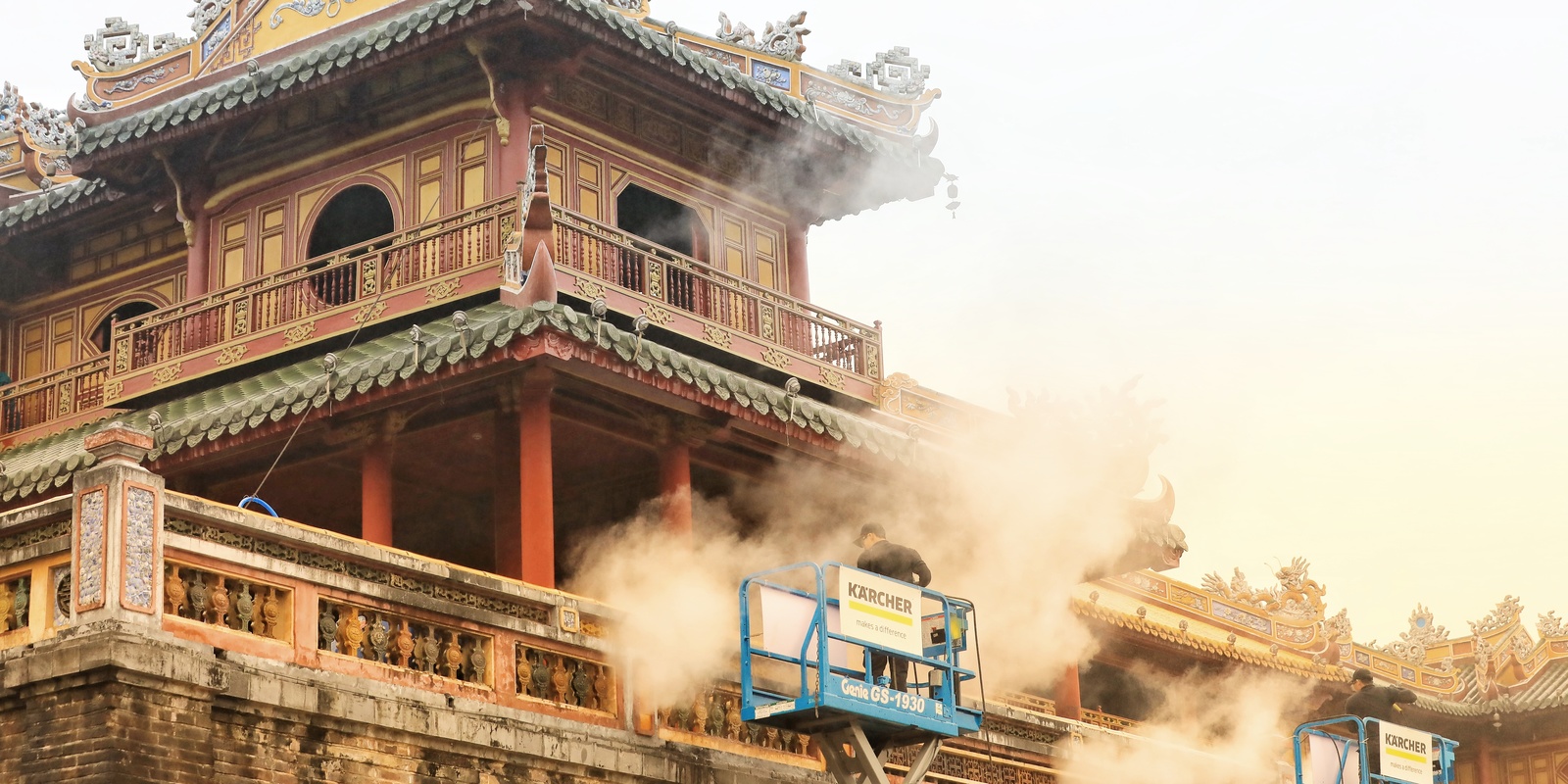Cleaning and Art: Cooperation between Kärcher and artist Ralf Schmerberg
An unusual kind of cooperation has developed in Berlin-Oberschöneweide: Kärcher is cooperating with the world-famous artist Ralf Schmerberg, who with his team is today creating a place for art, culture and innovation in the former AEG turbine hall, which is now a listed building: the "MaHalla" (). Within the framework of its cultural sponsorship, Kärcher is taking on challenging cleaning tasks in the hall, which has been left unused for decades, and supporting the creation of works of art.
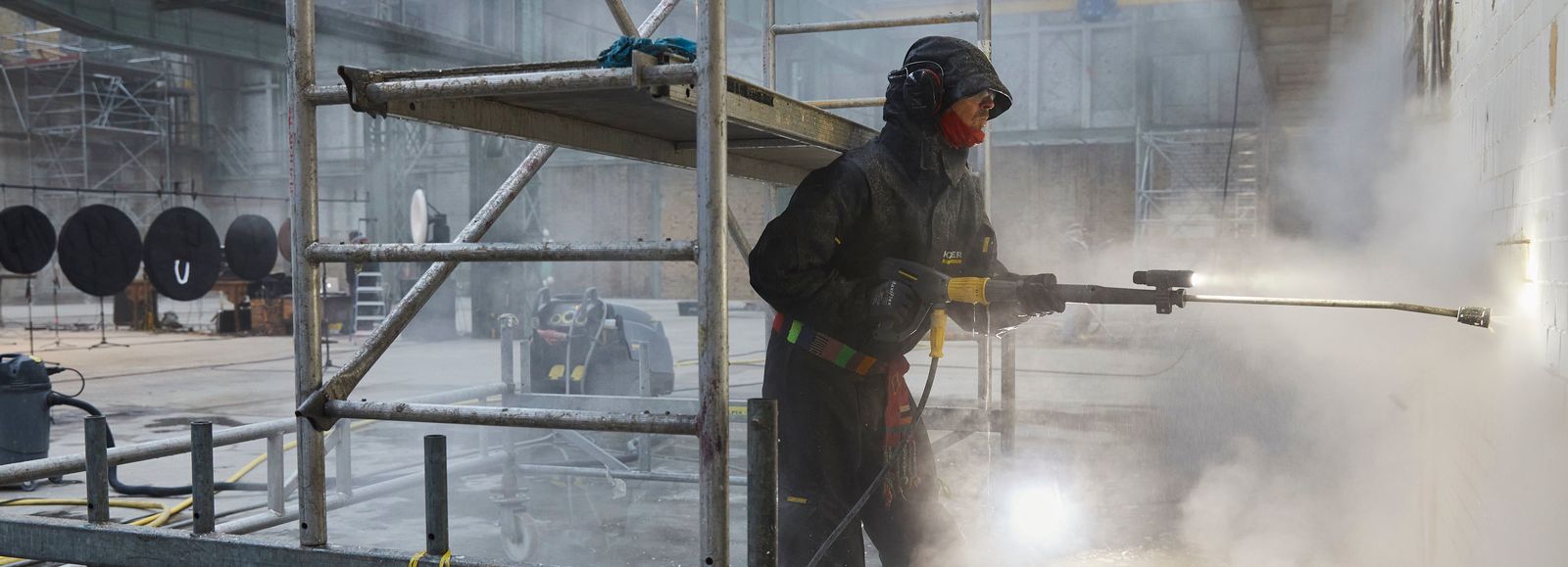
A particular challenge for the Kärcher experts was cleaning the interior brick facade of the "MaHalla". On the surface, which had never been professionally cleaned before, there were decades-old layers of paint and varnish, some of which dated back to the time the hall was built in 1895. Together with a restorer and the State Office for the Protection of Monuments, an effective and at the same time gentle method was determined with which the soiling could be removed while at the same time preserving the original substance. "We are proud to be able to contribute to the restoration of this listed site with our gentle cleaning technology," explained Thorsten Möwes, who, as a specialist for restorative cleaning at Kärcher, was responsible for the on-site implementation.
In a first step, the hot water high-pressure process was used. In this process, the 80 to 90 degree hot water hits the surface at a pressure of 3 to 4 bar. A large part of the paint and varnish layers had already been carefully removed in this way. For stubborn dirt, Kärcher then used the dry ice blasting process. In this technique, -79 °C cold dry ice pellets are blasted onto the soiled surface. At the moment of impact, the dry ice changes from a solid to a gaseous state (sublimation), penetrates the dirt and detaches it from the surface due to the increase in volume in the course of sublimation, without damaging the wall itself. At the same time, the temperature difference due to the subzero temperatures and the high impact speed also cause the dirt to be loosened.
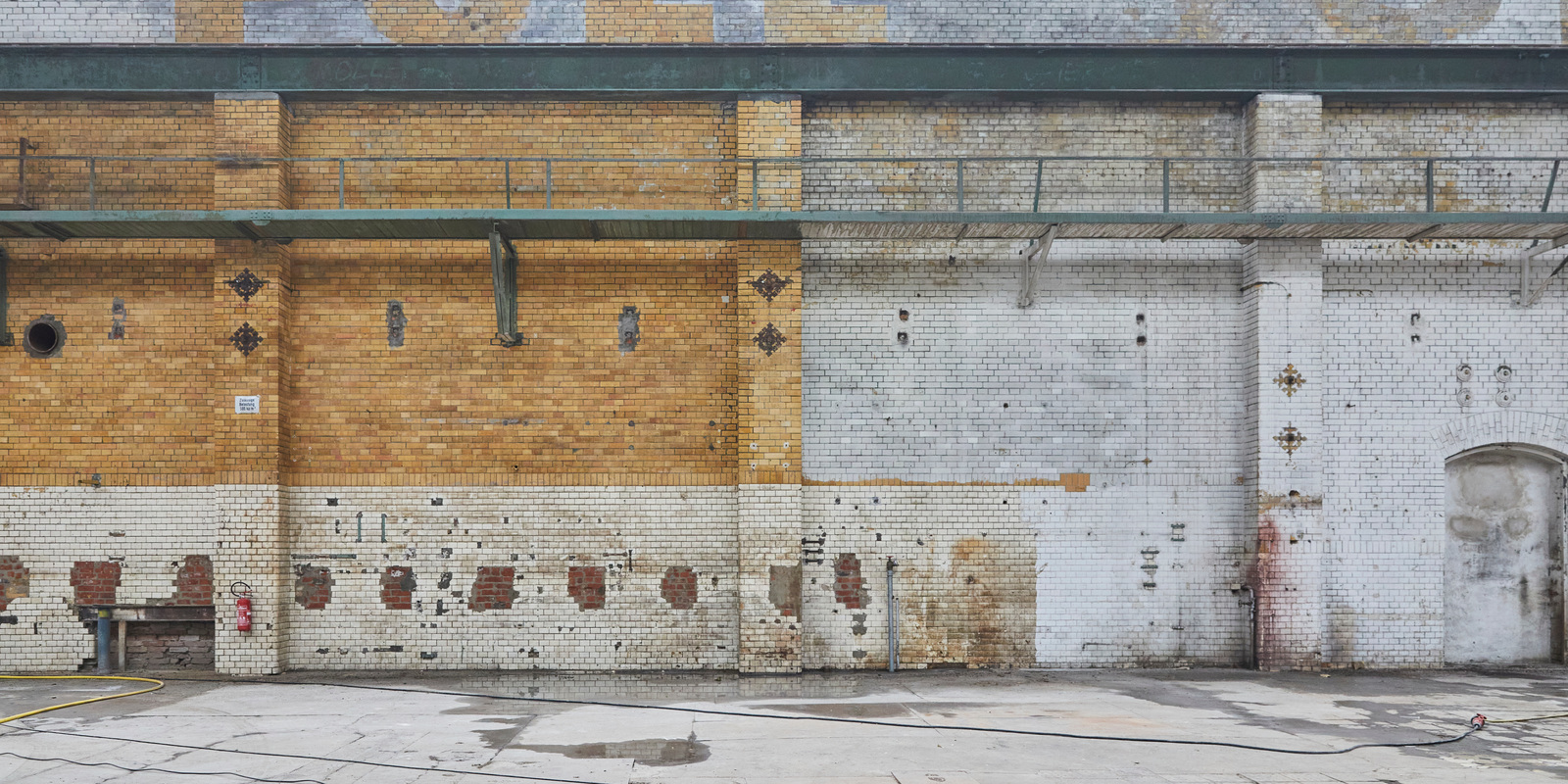
The hall in which the "MaHalla" is being built is part of the nucleus of AEG; the first three-phase power plant in Europe was built here in 1895. From here began the Europe-wide spread of high voltage current and with it the electrification of cities. Together with the historic turbine hall, where the "MaHalla" is located today, the founding center of the electrical industry grew, which at its peak extended 2.5 kilometers along the Spree.
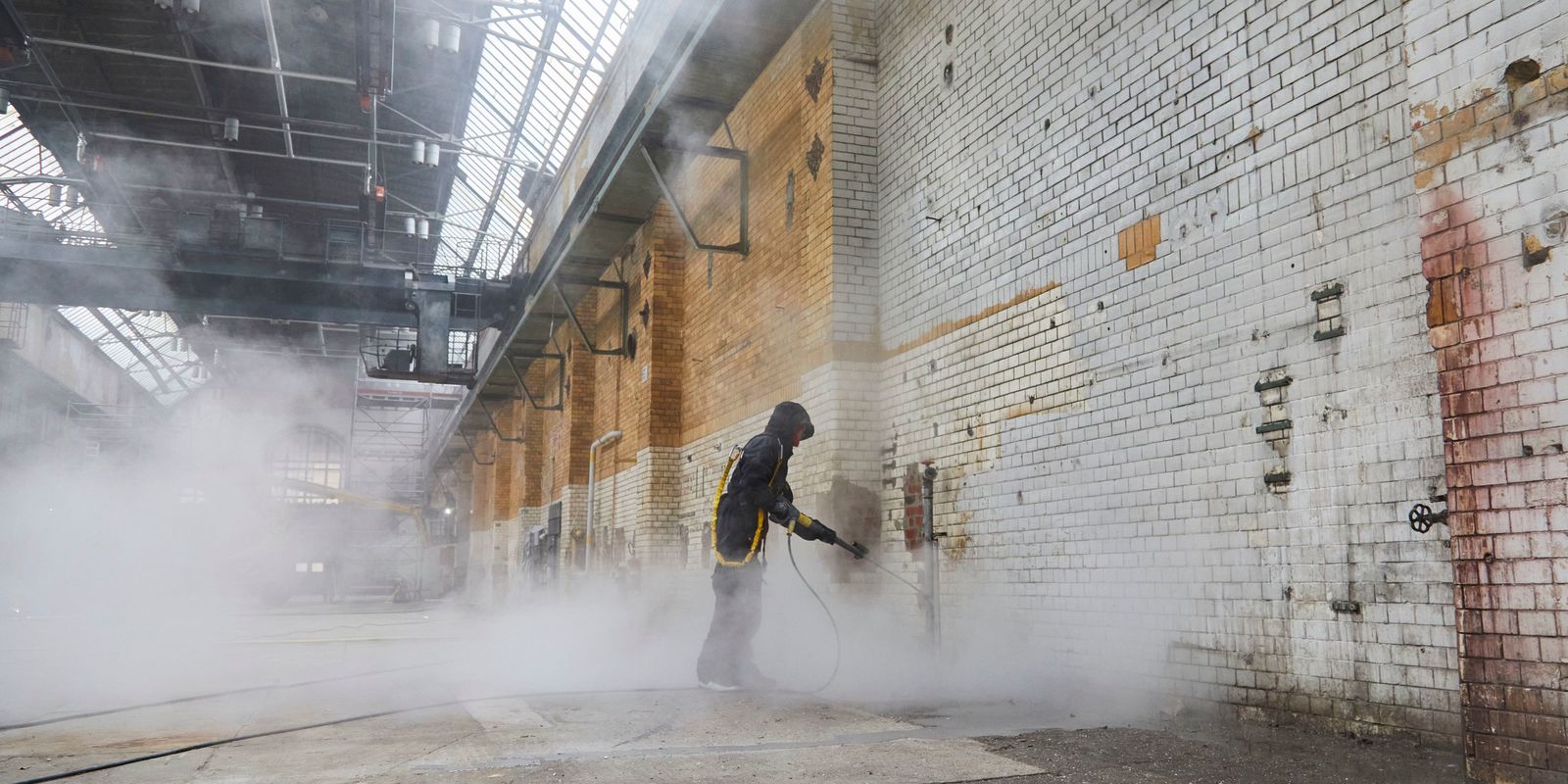
Until the fall of the Wall in 1990, the industrial complex on Wilhelminenhofstrasse was bustling with activity: up to 25,000 people worked in five state-owned companies every day. Oberschöneweide was considered the "heart" of the East German energy industry. Everything that made electricity flow was produced. Since the beginning of the 1990s, the complex has been largely empty. Today, a forward-looking mix of creative business and science is developing in the listed industrial buildings.
The artist, who comes from near Stuttgart, lived with the Sannyasins in his youth and studied the teachings of Tibetan Buddhism before dedicating himself to self-taught art. In the course of his career, Ralf Schmerberg realized numerous collaborations with international brands, artists and musicians. Schmerberg's diverse artistic oeuvre includes filmic, photographic and sculptural works as well as social gatherings and large-scale media installations in public spaces such as "HOLY WOOD" in Berlin's Tiergarten or "Stromfresser" at Hamburg's Gänsemarkt. His cross-genre and cross-disciplinary projects and stagings are often based on a participatory character, which not infrequently also stimulates social discourse. With the artist collective Music Ashram, Schmerberg has been creating performative sound situations since 2019, in which the audience takes on as creative a role as the artist himself.
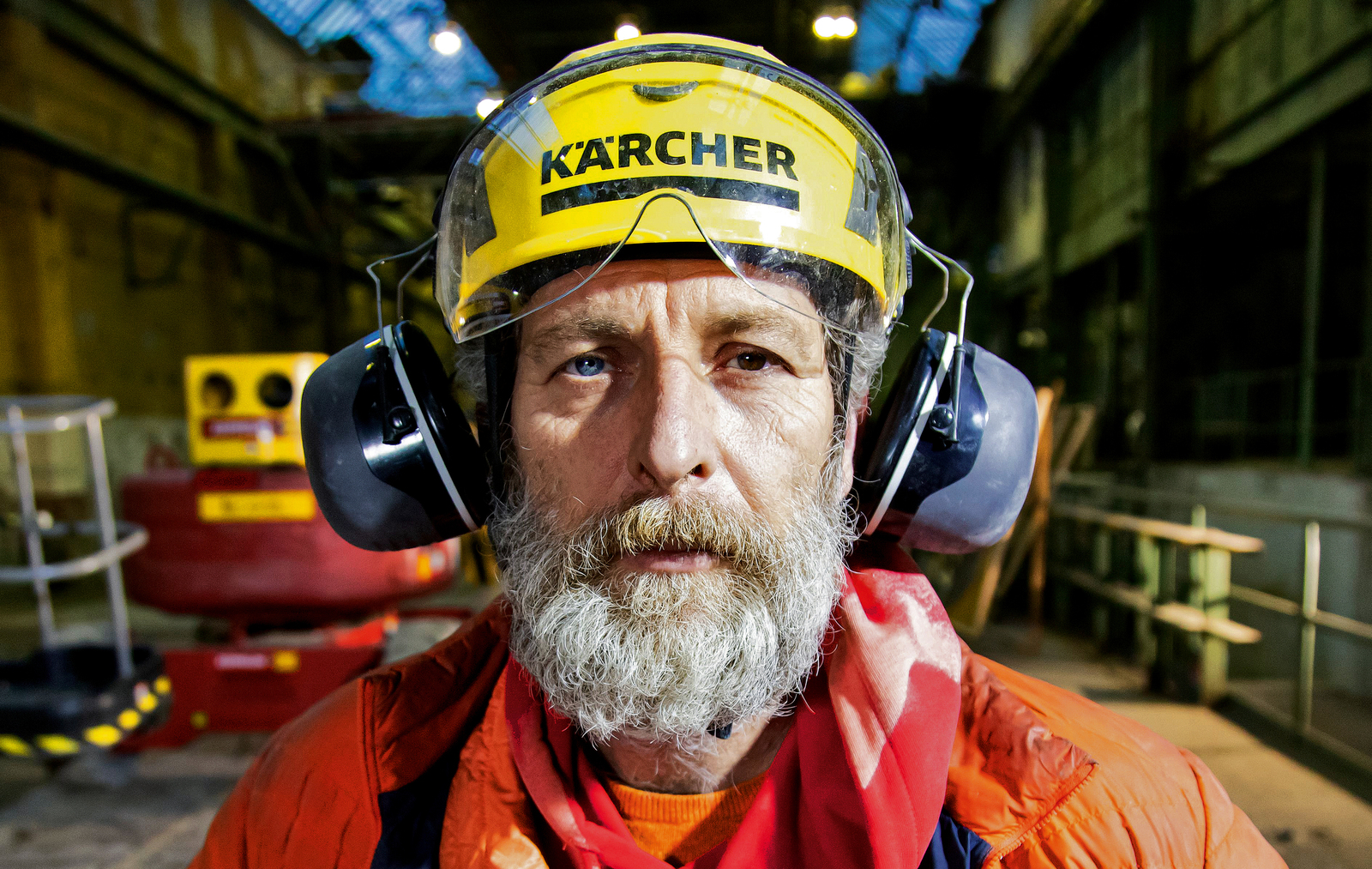
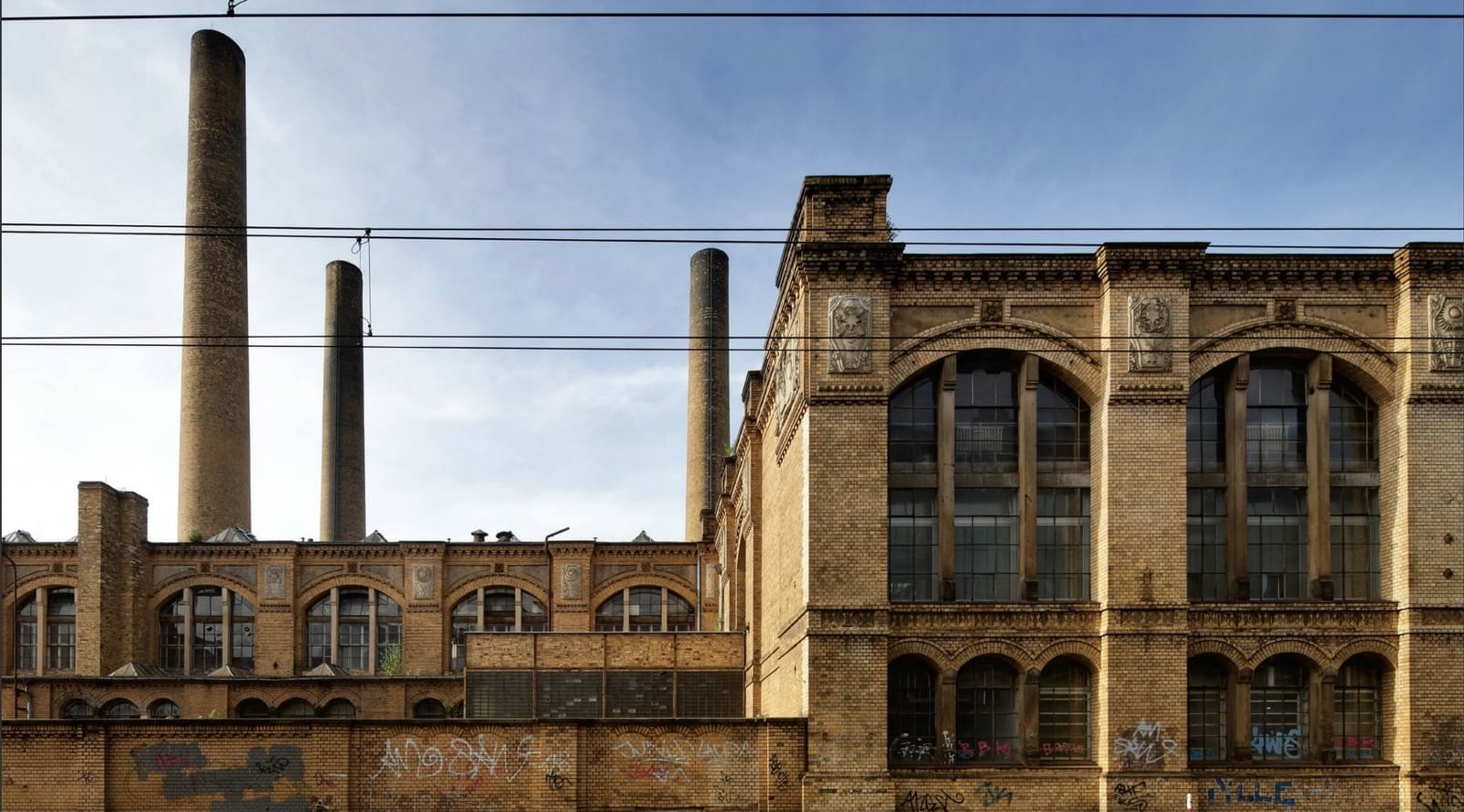
Alle Fakten auf einen Blick
Country: Germany
Place: Berlin-Oberschöneweide
Type of contamination: paint, varnish, soot and dust
Cleaning technology: hot water high-pressure cleaning, dry ice blasting, firefighting vacuum cleaner.
Implementation: January 2021


